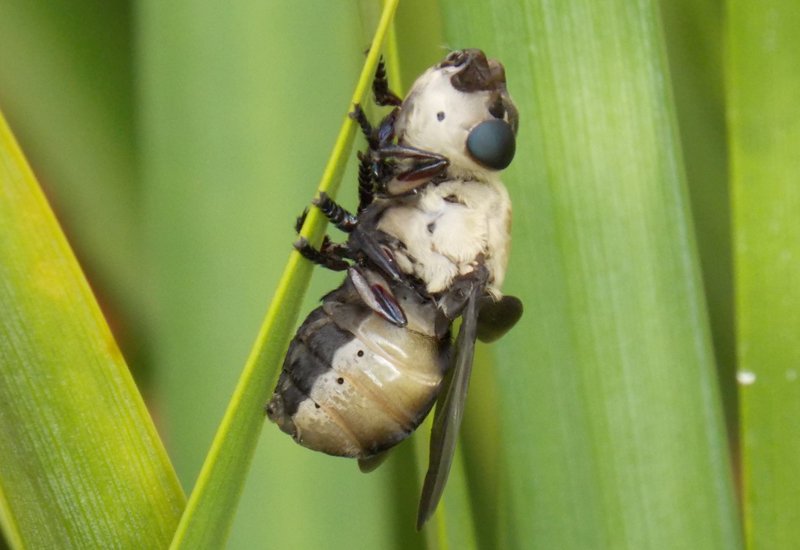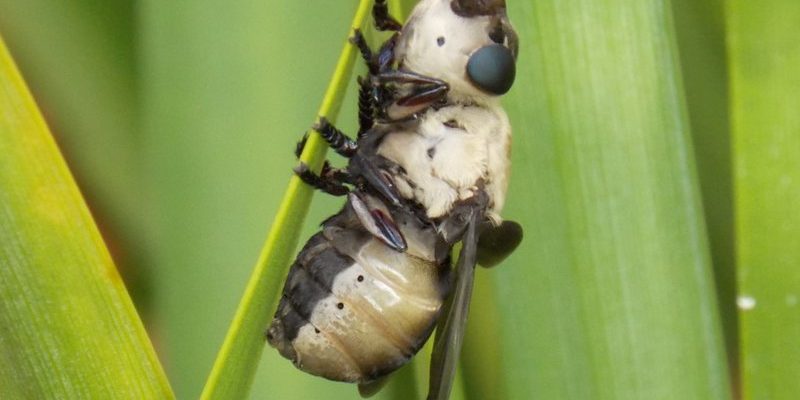
The botfly is notorious for its uncommon approach to reproduction. Instead of laying eggs directly on the host, a female botfly often relies on a **vector**, like a mosquito or tick, to transfer her eggs. Once the larvae hatch, they burrow into the skin of the unsuspecting host. This method often leaves wildlife in discomfort, leading to various complications, including infections or even fatalities in severe cases. Detecting these parasites before they make themselves at home is crucial for wildlife conservation and veterinary medicine. Here’s where host detection strategies come into play.
Understanding the Botfly Life Cycle
To effectively detect botflies, it’s important to grasp their life cycle. The journey begins when a female botfly lays her eggs on a vector such as a mosquito. These eggs hatch into tiny larvae that find their way onto a host. Once on the skin, they enter through a small opening, where they can grow and thrive. This stage can last several weeks, and if left undetected, the larvae can cause great distress to their host.
You might be wondering: why does it matter if we understand their life cycle? Well, knowing when and how botflies infest their hosts can help researchers develop better detection strategies. If we can pinpoint the times when these larvae are most active or vulnerable, we can monitor animal populations more effectively and implement preventative measures.
Ultimately, the life cycle of a botfly is a delicate dance between parasitism and survival. Understanding this cycle allows scientists to identify not only the botflies’ preferred hosts but also the environmental conditions that foster their propagation.
Identifying Potential Hosts in Forest Environments
Detecting botfly infestations requires knowing which animals are likely to be affected. In forest environments, common hosts include mammals like deer, rabbits, and even domestic livestock that wander into the wild. Each of these animals has a unique habitat and behavior, which can provide clues for detection.
For instance, deer are often found in dense foliage where they graze. Researchers can monitor these areas for signs of botflies, such as increased scratching or unusual behavior among the deer. Similarly, understanding the habitat preferences of other potential hosts can lead to more effective surveillance.
Another thing to consider is the seasonality of botfly activity. Most botflies are more active during warm months. By focusing on these times and the animals that inhabit the area, researchers can set up monitoring efforts to look for larvae or other signs of infestation.
Field Techniques for Botfly Detection
Now that we understand their life cycle and potential hosts, let’s delve into some field techniques used for botfly detection. Two common methods are **visual inspections** and **trap setups**.
- Visual Inspections: Field researchers often conduct thorough inspections on animals that exhibit symptoms of infestation. Signs include irritation, swelling, or unusual behavior. This hands-on method allows researchers to directly observe and identify larvae.
- Trap Setups: Another effective method is using traps designed to capture vectors like mosquitoes. By analyzing the trapped insects, researchers can assess the presence and likelihood of botfly eggs, providing indirect evidence of potential infestation.
Both of these techniques require patience and keen observation. They can be labor-intensive, but they help gather critical data on botfly activity in specific forest environments.
Utilizing Technology for Detection
In today’s digital age, technology is playing an exciting role in detecting botflies. **Remote sensing tools**, like drones equipped with cameras, are increasingly used to monitor wildlife populations from above. This not only reduces human disturbance but can also provide valuable insights into the health of ecosystems.
Another technological advancement involves genetic testing. By collecting samples from the environment or potential hosts, researchers can analyze DNA to determine the presence of botflies. This method is highly specific and can even identify the species of botfly involved.
Honestly, these technological solutions can drastically improve our understanding of botfly-host interactions. They save time and resources, allowing researchers to cover larger areas and get quicker results.
Prevention and Management Strategies
Detecting botflies is only half of the battle; **prevention and management** are equally important. For wildlife managers and veterinarians, educating the public about botfly risks is crucial. This involves advising pet owners on preventing botfly infestations through regular check-ups and vaccinations.
Moreover, habitat management can play a significant role in reducing botfly populations. For example, maintaining balanced ecosystems by controlling deer populations can limit the number of potential hosts for botflies. This, in turn, decreases the likelihood of infestations spreading.
You might be wondering how this impacts the larger ecosystem. Well, by managing botfly populations and their hosts, we contribute to the overall health and stability of forest environments, ensuring that both wildlife and plant life can thrive harmoniously.
The Role of Research in Botfly Detection
Ongoing research into botflies and their host relationships is essential for developing effective detection strategies. Many institutions focus on studying botfly behaviors, populations, and interactions with their hosts. This research informs wildlife conservation practices and helps mitigate the impacts of parasitic infestations.
Researchers are also looking at how climate change affects botfly populations. As temperatures rise and habitats shift, understanding these dynamics will be crucial for future conservation efforts. This research helps wildlife managers adapt their strategies as environmental conditions change.
By contributing to this body of knowledge, scientists can equip conservationists with the necessary tools to protect both wildlife and ecosystems from the impacts of botfly infestations.
In summary, botfly host detection in forest environments is a multi-faceted endeavor that combines understanding their life cycle, identifying potential hosts, employing field techniques, utilizing technology, and establishing prevention strategies. Each piece of the puzzle is vital to maintaining the health of wildlife and their habitats.
By investing time and resources into understanding these pesky parasites, we not only help protect the animals at risk but also contribute to the overall balance of nature. It’s a reminder of how interconnected our ecosystems are—where even the smallest creatures can create ripples that affect the larger community. From fellow researchers to local wildlife lovers, everyone has a role to play in monitoring and managing the delicate dance of life in the forests we cherish.

